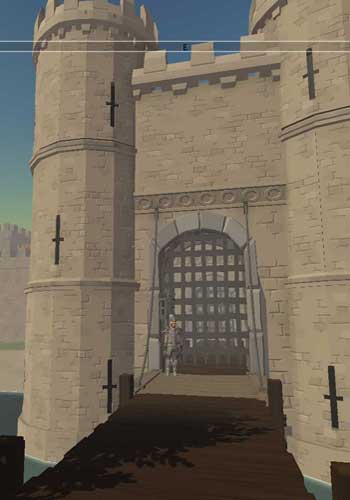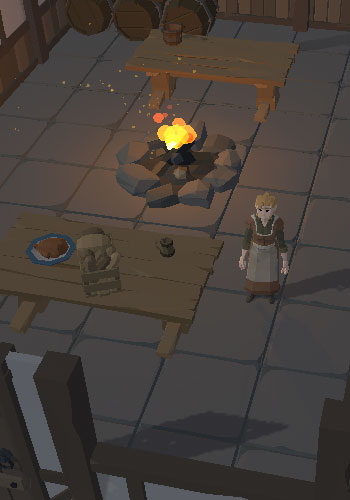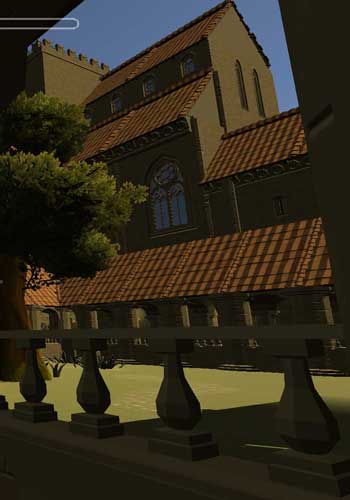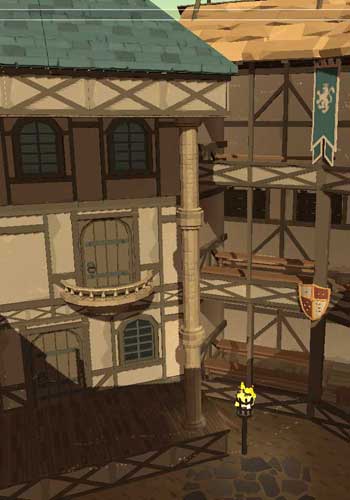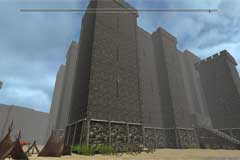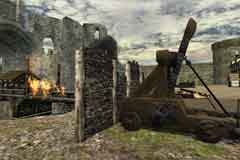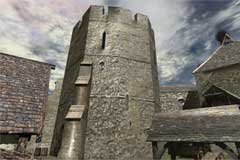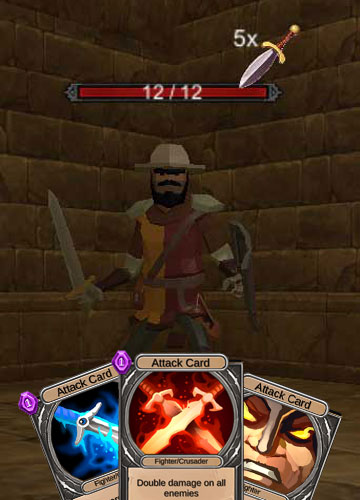
Background
 n general the medieval people
were self-supporting. Most of what they needed
was made and found locally. The sheep they raised provided mutton and
wool. Hemp and flax was gathered from the fields and woven into cloth.
The hides of animals were
tanned to produce leather and the wood from trees was used to keep the
blacksmiths' furnaces burning. Potters might not be found locally, but
the average medieval person
would not have to have gone far to find someone who was making pottery
items. The modern system of concentrated manufacturing has come about
because of machinery and
means of transport that make it possible to produce and transport goods
more cheaply than locally by hand.
n general the medieval people
were self-supporting. Most of what they needed
was made and found locally. The sheep they raised provided mutton and
wool. Hemp and flax was gathered from the fields and woven into cloth.
The hides of animals were
tanned to produce leather and the wood from trees was used to keep the
blacksmiths' furnaces burning. Potters might not be found locally, but
the average medieval person
would not have to have gone far to find someone who was making pottery
items. The modern system of concentrated manufacturing has come about
because of machinery and
means of transport that make it possible to produce and transport goods
more cheaply than locally by hand.
Although most industries were practiced across the whole of the country, such as weaving cloth, tanning hides and blacksmiths producing metal goods, some industries were concentrated in certain areas. Not all areas were rich in iron ore, or had clay for pottery for instance. It was industries such as mining that could only exist where the minerals could be found.
Mining
In medieval times coal was mined and used in the production of iron. Most of the coal was mined from open-cast mines where the coal seams were easily found on or just below the surface of the land. When the easily mined coal began to run out people turned to seacoal. The name seacoal is thought to have been used because the coal was found washed up on beaches but this seems unlikely.
Coal was the eaiest of the minerals to find and simply could be dug up, but other minerals such as tin and lead could only be found in certain areas of England. Cornwall was important for the amount of tin that was mined there, whereas Derbyshire was important for the amounts of lead and silver. Henry II granted licenses to those who wanted to dig mines in the royal forests. Due to the skill of the miners digging for these special minerals, the miners became a privilaged group. They developed their own courts and were not taxed like other medieval people. They were exempt from normal military service, but due to their specialist skills, could be expected to help dig the mines that were dug beneath castle walls to being them down.
Guilds
 ver time people making the same
products formed societies known as guilds. The guilds helped look after
the interests of the masters and
workers who were members of that guild. It tried to ensure that the
skills of the members were high enough and maintaining standards. The
typical guild
consisted of three types of people, the master, the apprentices and the
journeymen.
ver time people making the same
products formed societies known as guilds. The guilds helped look after
the interests of the masters and
workers who were members of that guild. It tried to ensure that the
skills of the members were high enough and maintaining standards. The
typical guild
consisted of three types of people, the master, the apprentices and the
journeymen.
The master of his trade owned a shop and had an apprentice who he trained in his trade. Mastering a trade could take seven years or more and the apprentice would live with the master and his family while he learnt. Once the apprentice was sufficiently skilled he could join the guild and either become a master, if he had enough money, or become a journeyman. To prove he was good enough to join the guild the apprentice had to produce a 'masterpiece' of an acceptable standard. A masterpiece being a piece of work of exceptional quality. The apprentice was looked after and trained by the guild while living with the master.
A journeyman travelled from village to village and town to town and got paid for working on a daily basis. If a journeyman earned enough money he could buy or rent a shop of his own but most could not afford it so remained travellers. Shops not only sold the goods but could be the place where the goods were made. This allowed buyers to see the goods being crafted.
Wool
Wool was a very important trade for England in medieval times and large amounts of wool were produced and exported. Looking after sheep was much easier than growing crops and the Church made large amounts of money from farming sheep on its land. The wool was in high demand from areas in northern Europe like Flanders where it was made into high quality cloth and sold all over Europe and back in England.
Wool was woven in England by individuals to clothe their own families and was the basic material used for the clothes they wore.
Metalworkers
A very high standard of metal-work was achieved by medieval craftsmen. Goldsmiths and Silversmiths produced outstanding pieces. Pewter, which is a mixture of tin and copper or lead, was used in medieval times for making all kinds of goods.
Other industries
Woodworkers were in high demand as most of the houses and the day-to-day utensils were made from wood. Clay potters also made many of the products that were required in medieval times. Plates, bowls and jars made from clay were common.
Trading
Markets and Fairs



 eekly markets and fairs were the main
way in which medieval people bought and sold goods. Farmers and craftsmen from
the countryside
would take their goods into the towns to sell at the markets. Shop keepers in
the towns had to shut their own shops on market days and sell from the stalls.
Villagers from outside the towns would go to the markets and fairs to buy goods
that could not get locally.
eekly markets and fairs were the main
way in which medieval people bought and sold goods. Farmers and craftsmen from
the countryside
would take their goods into the towns to sell at the markets. Shop keepers in
the towns had to shut their own shops on market days and sell from the stalls.
Villagers from outside the towns would go to the markets and fairs to buy goods
that could not get locally.
Once or twice a year huge fairs were held in the bigger towns. These fairs could last for days and even weeks. The range of goods available was much larger than the local markets and included goods from other countries. Due to the Crusades there was much more interest in foreign goods and merchants from the East were welcomed to sell fine clothes, wines, spices and lace. One of the largest fairs in England was the Stourbridge fair held near Cambridge after the September harvest and could last for five weeks.

Pedlars
Pedlars travelled from village to village selling goods from their carts and were a source of news.
Page Navigation


